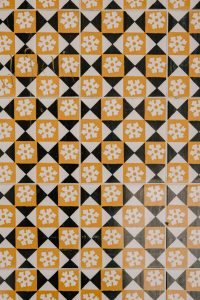The Australian Government’s NDIS (National Disability Insurance Scheme) has created a demand for high-quality Specialist Disability Accommodation (SDA). While the specialist nature of the housing usually requires a slightly higher entry cost, the return is significantly higher than traditional residential housing, and the SDA property is backed by the National Disability Insurance Agency (NDIA). Want to learn a little more about SDA Property? Read our introduction here.
Financing property that is purchased or built for used as SDA (Specialist Disability Accommodation) as part of the Federal Government’s ongoing commitment to housing those with disabilities, certainly isn’t without its challenges. This FAQ introduces the primary finance challenge.
An SDA property isn’t a standard property. The property is built or modified to exact standards with modifications required for those that may occupy the premises, and these additions are made on teh basis of the category of occupant that will occupy the home: ‘Improved Livability’, ‘Fully Accessible’, or ‘High Physical Support’. Modifications to the property might include wider stairs and hallways, wider doorways, lower bench-tops and kitchen fittings, rails in bathrooms, automation, bedroom ceiling rigs, exterior ramps, and so on. Depending on whether the property requires on-site care there may also be a requirement to build On-Site Accommodation (OOA) for support workers. In addition, there’s requirements for each bedroom that may require a ‘Private Area’ and/or kitchenette facilities. The list goes on.
As you may be able to tell, the fixtures, alterations, and additions, all add up very quickly. While the exterior of the property is largely indistinguishable from any other property the interior is significantly modified. However, when most banks values the property they have little option other than value the property as per their standard guidelines, which is usually predicated on valuations from other similar property in the area. Despite the increased funds that went into property modification or build it’s valued as if it were a standard residential home, thus reducing the LVR (or Loan to Value Ratio).
We recommend that those looking to invest in SDA Properties plan on an LVR as low as 60%, meaning that sufficient cash funds or equity be available elsewhere. That said, there are still occasions where a valuation comes in close to the actual value, and this is mainly due to the SDA Builders employing cutting-edge construction techniques that haven’t yet made their way into the mainstream market.
There are some SDA-friendly banks but a good credit history is still required.
The returns from SDA property genera telly ranges anywhere from 8% to 20%, depending upon the category build, location, and size. The high returns – backed by Government-funded tenants – are what make the SDA property investment an attractive investment option.
Related Articles in our Blog
You may find useful information and articles in our blog. Feel free to call anytime on 0477 555 014 for a no-obligation discussion.
We have dozens of products available from our vast array of banks on our panel that may be suited to your specific circumstances.





















